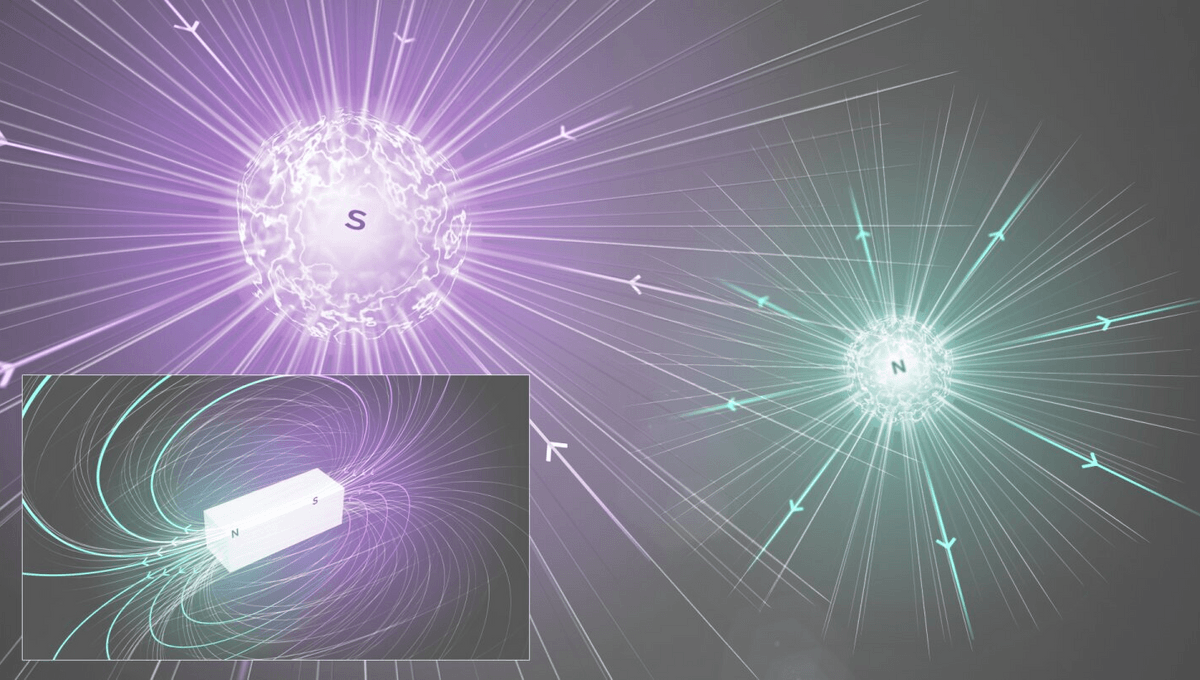
Physicists suspect the universe contains magnetic monopoles – north or south poles without their counterpart. They’ve yet to find them, but new data from the world’s most powerful particle collider has allowed them to tighten the limits on where in energy-space they may lie.
Every magnet we know, from the Earth itself down to tiny versions we attach to our fridges, has both a north and a south pole. Who hasn’t spent time attempting to push two poles of the same sort together? For almost a century, physicists have been on what some may consider an even more fruitless task; finding a north (or south) pole that exists in isolation, with no counterpart.
It sounds like the product of a mind on drugs – “Hey, what if there was only one magnetic pole?” – but it was the famously taciturn and workaholic physicist Paul Dirac who proposed the existence of what he called magnetic monopoles. Dirac showed their presence was consistent with quantum mechanics, and indeed a single magnetic monopole, somewhere in the universe could explain otherwise inexplicable features of charge. Dirac proposed the smallest possible magnetic charge, including for a single pole, was 68.5 times the charge on an electron. All larger monopoles should be multiples of that.
In the 70s, the idea moved from possibility to probability, as the existence of magnetic monopoles came to be a key test for theories to unite general relativity and quantum mechanics. Wacky as they sound to those outside the field, one physicist named Joseph Polchinski called their existence; “One of the safest bets one could make about physics not yet seen.” That was 21 years ago, and Polchinski’s bet remains unfilled – reports of the discovery of magnetic monopoles have occurred occasionally, but then been withdrawn or cases of misreporting.
The ATLAS collaboration at CERN suspects there are two ways high energy collisions between protons may create magnetic monopoles with masses up to 4 TeV. Each relies on the protons releasing virtual photons (an intermediary between particles that carries the electromagnetic force). In one a virtual photon creates a magnetic monopole on its own, while in the other two photons interact to create a monopole. Either of these would, the collaboration notes; “Restore the broken electric-magnetic dual symmetry in Maxwell’s equations.”
ATLAS hopes to find evidence for one of these by looking for charge deposits on their detector. Since a monopole would need to carry a charge so much greater than that of an electron, its deposits should stand out from those of more familiar subatomic particles.
Large Hadron Collider (LHC) data takes a long time to analyze. ATLAS has only now released a preprint of a paper – still to pass peer review – based on the second LHC run, from 2015-2018. Although they have not found evidence of magnetic monopoles, the team believes they have narrowed down the possible masses/energies for the smallest magnetic monopoles, and their rate of production, by a factor of three.
Quests like this can seem endless to outsiders, as particle physicists report over and over not finding what they are looking for. Telling the world they have narrowed the limits can sound like a justification of failure. However, the same pattern was seen with the search for the Higgs Boson, eventually ending in stunning success. As with the Higgs, finding magnetic monopoles is important, not only to prove theories that predict their existence right, but because the masses we find would differentiate between competing theories.
Certainly, the physics community believes in the quest. The list of the members of the ATLAS collaboration lists more than 3,000 scientists, making their names and affiliations considerably longer than the paper itself.
The paper has been submitted to the Journal of High Energy Physics, and a preprint is available on ArXiv.org
Source Link: CERN Places New Limits In The Search For Magnetic Monopoles